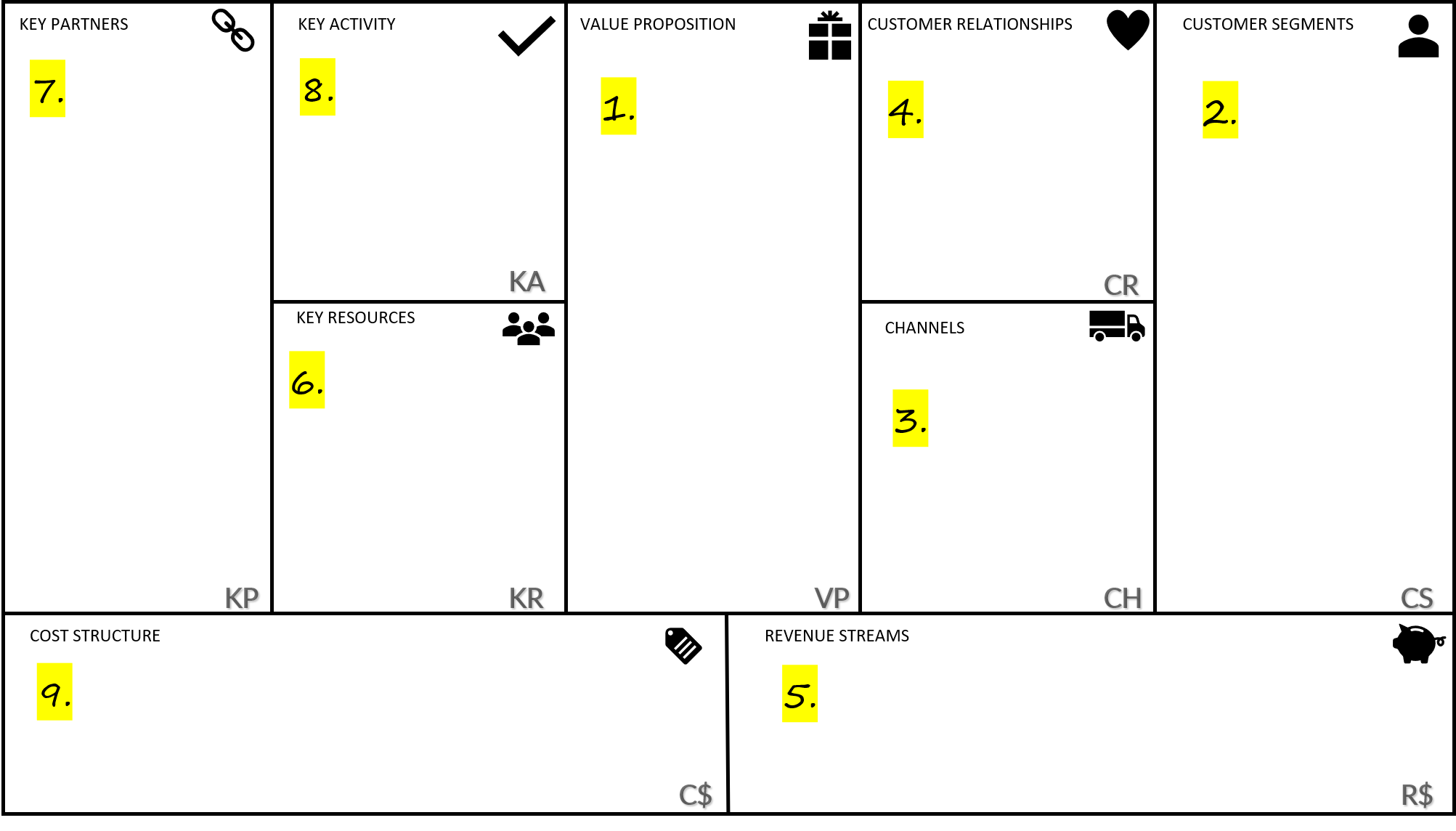HISTORY
The founder of the Business Model Canvas is Alexander Osterwalder. In 2006 he founded BusinessModelDesign.com, and in 2010 he co-founded the consultancy firm Strategyzer, which has provided over 5 million people with Osterwalder’s Business Model Canvas.
Ash Maurya launched the Lean Canvas, in 2011. While he gives kudos and acknowledgement to Alexander, it appears that somethings were mssng? Many of the examples in Alexanders book: “Business Model Generation” were to simple, the book illustrated the business models of well known companies like Apple and Skype — after they were successful. “I was more interested in the learning that got them there”. Ahhh Science, got to love it! We are creatures of observations.
Ok, enough of the history…they are both very smart, entrepreneurs and insight builders but what does it mean, or could it…for Alberta based businesses?
THE CANVAS
If you are an existing business, Alexander built this for you: (click to enlarge)
Simple, but the genius of an artist, is to make us see a picture. As funny as it is, the picture from a distance conveys one story, up close, another.
It consist of nine pieces or boxes. The nine boxes can describe any company from the world’s largest to a two-person company.
Let’s take a look at the first piece called the value proposition.
- The value proposition answers the question what you are offering? What is it about your product or service that is solving a problem or a want. Are you eliminating pain and providing gain? Remember, there’s lots of me-too products and services out there. Focus on what is truly unique about your offering.
- Next is who are my customers, who are they and why would they buy? So who does your Value Proposition target?…it’s figuring out all their geographic social & demographics characteristics.
- Next is channels how do you sell and distribute your products and services? Today, we now have virtual channels the web, mobile, cloud and so distribution of product has significantly changed prior to 20 years ago. Back then, it was physical brick and mortar facilities, in B2B it was a physical sales force. Today that’s all changed. What you want to ask is how will I be selling and how will I be distributing my products? Are they through physical channels or they web mobile or given today a hybrid…combination of both and what is the best… considering my Value Proposition?
- Customer relationships, it’s the fourth piece and interesting interaction with these other three pieces. It basically says how do I get customers how do I keep them and how do I grow or retain them?
- The next thing is revenue streams, how do I actually make money from my product or service being sold to customer segments? Revenue streams basically ask the question what value is the customer paying for and then actually has you think about what’s the strategy of how I’m gonna capture that value?
- The next piece you want to think about is the key resources what do you need to make the business model work. What assets are important? Do you need capital, do you need a line of credit, do you need a physical plant; like the manufacturing line, do you need specialised machines do you need vans for delivery do you need intellectual property, is there patents you need to acquire or protect do you need to acquire customer lists or is it you just need to get great people, great software programmers in a specific area or great hardware designers or great manufacturing people?
- Who are your key partners? Suppliers and partnerships are interesting. What exactly are we acquiring from partners and also what activities are they going to perform? Partners and Suppliers should change overtime, if your company is scaleable and moving in the right direction.
- Next are key activities ,what’s the most important things you need to do for the business to make the business model work…. are you in the production business? Are you making something or are you in the problem-solving business like you’re doing consulting or engineering or are you managing supply chains? What are the key activities you need to become expert at?
- Finally all this adds up on the left-hand side to costs. What are the cost and expenses to operate the business model. One of the interesting things about cost is it’s not just the obvious ones like people or buildings or materials. What you’re really gonna be asking is what are the entire costs to operate our business model? So you want to think about what are the most important costs you need to worry about, what are the most expensive resources you’re going to need to pay for and what key activities are the most expensive? Then you want to ask the typical accounting things what are fixed costs what are variable costs are there economies of scale and you want to start getting a good handle on what it is that will end up costing you money to run your business.
Part 2, next week
RECAP – Google Business Model Canvas Eg.
LEAN CANVAS – Uber Lean Eg.
VALUE PROPOSITION CANVAS – Uber VP Eg.
KEY TAKEAWAYS FOR ALBERTA BUSINESS
FREE CANVAS EXCEL TEMPLATES

